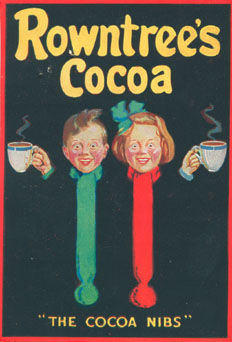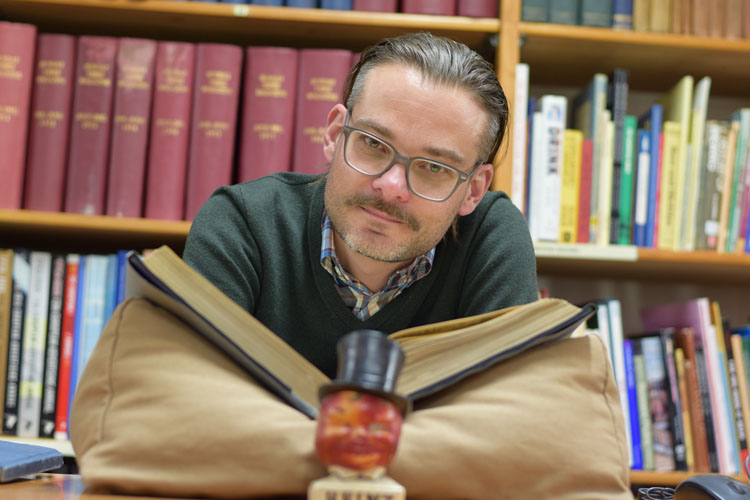Brand mascots - uncovered
HAT was delighted to welcome back Dr Richard Hornsey (below), Lecturer in Modern British History at the University of Nottingham for some special research. As a cultural historian of twentieth-century Britain, HAT is a favourite resource for Richard. This time, his mission was mascots – in particular the sudden rise of ‘brand mascots’ (anthropomorphic advertising characters) in the early 1920s.
Richard explains - “Branding was popularly felt to be a progressive force in the 1920s and 30s. The creation of advertising mascots played an important role here, allowing consumers to understand their place within a wider, democratic public.”
Many brand mascots from the 1920s are now forgotten and he came to HAT to trace out their individual histories and find out more about how they were perceived by the advertising agencies who created them. HAT's extensive runs of 'Advertising World' and 'Advertiser's Weekly' proved to be really useful here.
So too was the archive of David Lamb, past Advertising Manager at Rowntree Mackintosh Ltd. A series of annual reports (1916-1939) provided complete details of the firm’s advertising across all media including show cards, stationery, promotional gifts, press advertisements and posters, as well as details of competitors’ spend and the relationship of advertising to sales. In particular, Richard used the David Lamb Archive to trace out the brief, but colourful career of Rowntree’s 'Cocoa Nibs' – the jolly, rosy-cheeked boy and girl mascots that sold Elect Cocoa in the early 1920s (see image below).


As popular media figures of the interwar era, brand mascots shared a lot with Hollywood film stars and offered people a sense of participation in what seemed like a new and exciting modern mass society.
Richard’s research prompted HAT to further explore the mascots held in our vaults, and prompted Heinz’s ‘Mr. Aristocrat’ Tomato Man (above) to be taken out of from his box. He was, as you might expect, a (very!) red faced little gentleman sporting a top hat and monocle.
‘Mr Aristocrat’ evolved in the USA and became a trademark character for Heinz to promote their “far superior” Tomato Juice. For decades, this tomato toff was seen on Heinz’s ketchup, soup and juice packaging.
Richard was delighted to meet this special mascot and noted that, certainly in Britain, brand mascots were often conspicuously upper class, such as the monocled ‘Meltonian Man’ (boot polish - see below), ‘Sir Kreemy Knut’’ (toffee - see below), and the earliest and most famous of them all, Johnnie Walker (whisky).
He adds, “Because mass-produced brands had made these items cheaper and more affordable for everyone, advertisers could re-present class privilege as something comical – no longer a sign of social and economic inequality, but more a matter of style.”
Sir Kreemy Knut, a dapper young gent with his cane, bowler hat and monocle, first appeared in 1919 as the face of Sharps Toffee - the word ‘knut’ being popular slang for a dedicated follower of fashion.
Johnnie Walker’s ‘striding man’ (above) first appeared in 1908, and was a likeness of the original Scottish businessman and storeholder. Dressed in gentlemanly attire (again with a cane and monocle), his striding symbolised the firm’s forward thinking and pursuit of excellence.
Richard says that he always looks forward to visiting HAT, not least because he gets to stay in the nearby market town of Beccles on the river Waveney. Perfect for enjoying a post-research walk or cycle and some local Adnams beer!

Of course, for those unable to visit us or with tighter schedules, archivists and researchers at HAT are available to assist with specialist research enquiries and provide reports and relevant hi res images etc.
« All News Articles